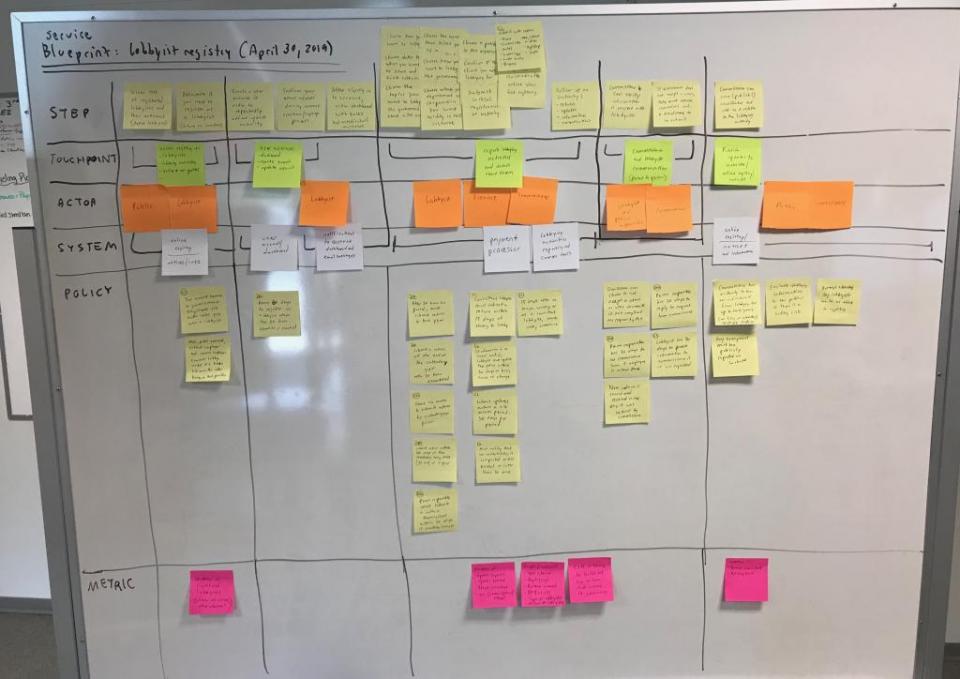
Lobbyist Registry service launched
The Government of Yukon has proclaimed the Lobbyists Registration Act and now organizations and people lobbying the government must report their lobbying activities.
To support this, we’ve just launched a new service called the Yukon Lobbyist Registry. This is where lobbyists go to meet their legal requirement to report lobbying activities. The public can also use the registry to see who's lobbying the Government of Yukon and on what topic. The purpose of creating a lobbyist registry is to make the interactions between lobbyists and government decision makers more transparent for the public.
Over a year ago, we started out with a discovery workshop with the project team so we could understand what problem we were trying to solve with this service.
We also identified external and internal users
At a high level, our 2 main external user groups are lobbyists and citizens.
- Lobbyists could be:
- an employee or someone who holds a position in an organization with decision making authority for that organization (in-house lobbyist); or
- hired by a client in a contracted role (consultant lobbyist).
- Citizens could be interested in seeing who lobbies the government and on what topic.
We examined what we’re doing and why we’re doing it
We were aware that citizens want more transparency from their government, which is why the Lobbyists Registration Act was created. We needed to develop something that would allow them to access this information.
Looking at lobbyists, we understood this new law would mean they'd be required to register their lobbying activities. So we had to provide them with a way to do this.
And, of course, we (the government) would be legally required to maintain and publish a lobbyist registry.
Mapping out users’ journeys
It’s really important we understand all of the touchpoints for people who will use and interact with this service. This is a new service and completely online so we mapped out user journeys for:
- lobbyists who had just registered;
- lobbyists who are already registered; and
- people who want to browse the registry.
Mapping out the user journeys helps us understand user needs, government requirements and the relationships between them. We can show all of the things that are happening and how the front and back ends of the service work together.
From this research, we can start to design a service to meet those needs. In this case, we created something called a service blueprint. Here’s how an early stage blueprint of this service looked.
Testing the service
After we moved onto building a prototype, we conducted user testing on this service throughout the development process. Every time we tested the service, we learned more about how people interacted with it. We used this knowledge to improve the prototype and make the user experience more seamless.
Now that the site is live and lobbyists register and start to add their lobbying activities, we’ll learn more about what works and where we can make improvements. We also provide a feedback form on the bottom of each page so people have an opportunity to let us know what they thought of the experience.
Thank you
Thanks to everyone who participated in this user research. The hours you invested will save other people who use this service time as they register and post lobbying activities of their own.
The final product
If we look back to where we started, we’ve come a long way to get this service live and available for use. That effort is worth it, though, as we’ve now met the requirement to maintain and publish a lobbyist registry.
More importantly, we’ve done our best to put user needs first.
With this new Lobbyist Registry, lobbyists can report their lobbying activities to remain in compliance with the new legal requirements set out in the Lobbyists Registration Act. After the registry starts to fill up, citizens can use it to see who's lobbying the government and on what topic.
This is government transparency in action.